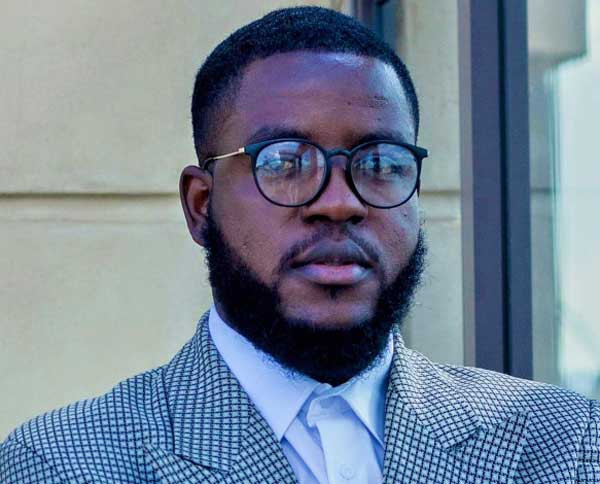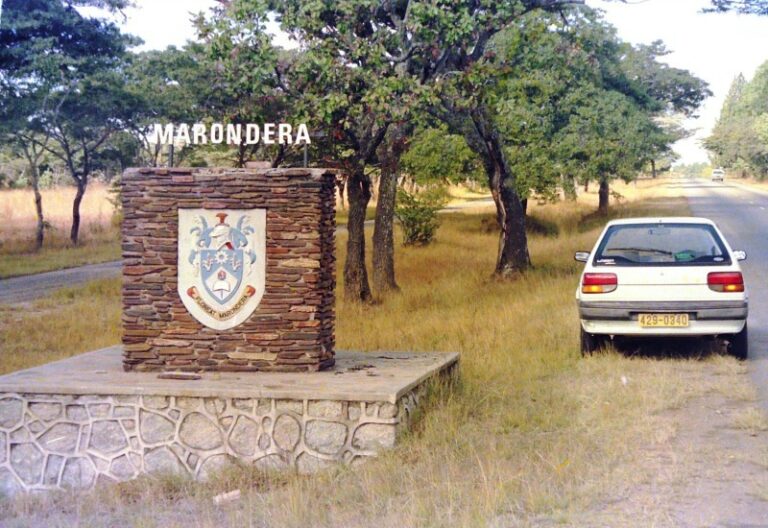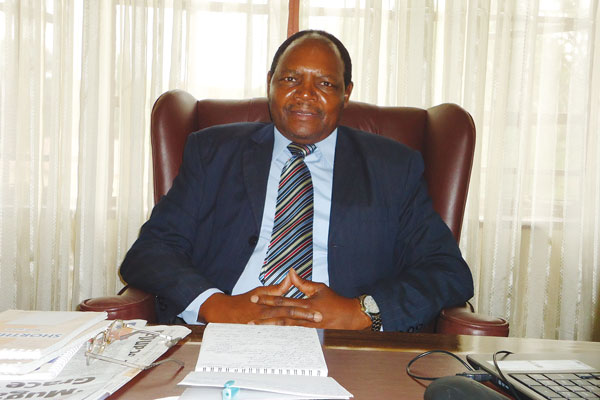
Making a city “smart” is emerging as a strategy to mitigate the problems generated by the urban population growth and rapid urbanization. More than half of the world’s population now lives in urban areas and this will continue for the next couple of decades. It is estimated that more than 80% of global gross domestic product is generated in cities and urbanisation, if managed well, it can contribute to sustainable and inclusive growth. In the case of Africa, urbanisation is progressing rapidly. The continent’s rate of urbanisation soared from 15% in 1960 to 40% in 2010, and is projected to reach 60% in 2050. It is expected that urban populations in Africa will triple in the next 50 years.
Cities and megacities, generate new kinds of complex problems such as difficulty in waste management, scarcity of resources, air pollution, overcrowding, human health concerns, traffic congestions, inadequate, deteriorating, aging infrastructures and environmental degradation.
Other problems are more social and organisational in nature and are associated with balancing, at times, conflicting interests of multiple and diverse stakeholders, high levels of interdependence, competing objectives and values, social and political complexity among others. Unless all these are managed well, chaos can erupt which in turn can negatively affect the quality of lives of urban dwellers and increase urban poverty.
Economist Vince Musewe (VM) met Leonard Muyambo (LM), a 29-year-old feisty entrepreneur who unpacked what Smart cities are all about.
Below are the excerpts from the interview.
VM: Leo you are very involved with the Smart city initiative. Can you tell us more about that?
LM: To understand my involvement with smart cities is to go back to Mutare in 2017 when I arrived back in the country and I visited the Meikles Park. I love that park because when I was young during Christmas, my dad used to take me there and we used to sit under the Christmas lights. Walking down to the park I saw young people sitting down on the pavement outside an ISP building “hotspotting” the free internet. I then started imagining the idea of creating hotspots where we had dignified infrastructure that would connect people. That's when the first smart park concept was formed and my long battle with the local authority to renovate the park. By then I did not understand what a smart city was but all I had was an idea to make our city liveable for young people and myself.
VM: What is your career background?
LM: I'm a bit of a round peg in a square hole. I'm a biomedical scientist by training and urban designer by passion. I studied biomedicine for my undergraduate degree and when I came back home from Cornell University in New York, I ventured into urban planning during that time I got admitted into Lund University Sweden for Sustainable Cities with a focus on Smart, Inclusive, and Climate-resilient cities program that has pretty much shaped my career as a sustainable urban designer.
VM: Smart cities are an emerging concept, can you explain to readers what it's all about?
LM: Imagine a city being the human body. As a human body has systems, so do cities and the systems function under the control of the brain and its associated systems. For a while our cities have been functioning without a brain and in a smart city, each system, from mobility/transportation, housing, and urban green spaces and so on, can be connected through technology and we can create a brain that is able to respond through the data that it's fed into it by remote sensors.
VM: Very Interesting concepts. Smart cities will obviously require new technologies, are these readily available to countries like Zimbabwe?
LM: The simple answer is yes. However, to get to this, we need to understand the entry point to smart cities, which is smart mobility. If we look at our mobility infrastructure there is a huge gap and we will need to develop the lacking infrastructure using new smart infrastructure. The technologies are affordable but strategy is lacking.
VM: What projects are you currently involved in?
LM: Currently our portfolio comprises smart mobility, smart construction, and smart parks. Under smart construction, we opened up a US$$3,5 million roadshow to acquire 3D construction printers for printing of affordable housing and schools in Zimbabwe and we are working on it with the Infrastructure Development Bank of Zimbabwe. On Smart parks, we recently were awarded 1st prize among 600 competing innovations under the $1 billion grant by the Postal Telecommunications Regulatory Authority of Zimbabwe (POTRAZ) USF fund to prototype and scale-up our smart park innovation which involves using urban green spaces to bridge the digital divide. Under smart mobility, we consult private stakeholders such as Econet and VAYA mobility services in which we integrated with ZUPCO and assisted in their internal research and development for expansion.
VM: Those are very exciting projects, what are your views on the potential the economic impact of smart cities in Africa?
LM: Traditionally our understanding is that 1% increase in infrastructure correlates to 1% increase in GDP. In Africa as we close our infrastructure gap, it is incumbent upon us that we leapfrog through smart infrastructure. About 80% of global GDP is generated from cities, by making our cities smart we will be able to optimise, increase productivity, and solve the major challenges we face from food insecurity to climate change.
VM: Urban spaces are becoming quite crowded and putting pressure on infrastructure. How can smart cities help?
LM: As I have stated earlier, our urban systems have been running without a brain. By connecting these urban spaces we can better understand why the crowding is occurring in those spaces and through data analytics we will be able to make informed decisions to decongest the spaces.
VM: Doesn't this all cost a lot of money and how can we fund smart city development?
LM: Yes of course it costs a lot of money, but also a lot of money is available locally and regionally through private and institutional investors. New smart cities initiatives are always going to require patient capital and this is where our Developmental Finance Institutions come in, for instance, the Infrastructure Development Bank of Zimbabwe who we have a good relationship with, have assisted either through financial commitment, land or as a big brother to facilitate transaction as with our current 3DCP capraise.
Other players such as POTRAZ through the USF fund have been active players in the economy to facilitate the development and scaling up of smart city projects, primarily on the software and hardware side.
The key thing to unlock all this capital is the development of a pipeline of bankable projects and speak to the capital requirements which is one of our strongest strategies at PowerAfrika labs under our parent company Tivane Investments a sustainable infrastructure project preparation company.
VM: Where do you see Zimbabwe in the future in relation to smart cities?
LM: Zimbabwe’s human capital gives me a lot of confidence. The scale at which young people are involved in building software and hardware for smart cities is pretty exciting, from university innovation hubs, individuals, and corporates. Once the prototyping stage is complete (which is the current 10 years we are operating under) as these innovations start to scale, it will be nothing short of a Chinese miracle.
VM: Urban poverty is becoming a major problem world-wide, how can we address it through smart cities?
LM: As a lab, we created the smart growth point strategy that connects the rural to the urban economy. Once technology connects the rural folk to the urban folk our productivity will increase and household incomes as well. We have followed through the growth point strategy that was implemented post-independence and are adding technology to it specifically targeting smallholder farmers, arts and crafts, and tourism.
VM: What would you advise government to do in order to expedite the development of smart cities?
LM: Government has done quite well in terms of expediting development of smart cities through its parastatals and regulators. Where I would like to see government play a role is finding policy that protects innovators and disruptors from corporate Zimbabwe which over the years have played unfair and stifled innovation in smart cities. Other areas of concern would be local authorities which are not accepting local innovations during the prototype stages. We need a policy on Joint Ventures (JV) between local authorities and startups/innovation-driven entrepreneurs, the JV Act alone is not enough.
VM: What is your vision with regard to smart cities?
LM: Oh man! Let's start with Julius Nyerere, a street in Harare that I'm fond of, so I would like to see smart parks with EV charging stations, smart benches with sensors communicating with each other, creating a low emission zone, decongest the streets, make our streets liveable, ensure that we are all connected. Use construction technologies to close our infrastructure gap in schools and affordable housing. I would love to live and see the day an ordinary Zimbo would choose public transport over using their personal car. Across Africa, my vision is to be one of the biggest exporter of affordable smart cities hardware such our current PAL smart Bench innovation.
VM: How can other youth be involved in the smart city initiative?
LM: Other youths can join the smart city initiative by being members of Innovation hubs, a notable hub is the Harare Institute of Technology, which admits anyone regardless of being a registered student. Find an ecosystem and start developing hardware and software.
VM: What is your final comment?
LM: A great civilisation is remembered by the infrastructure it leaves behind. From Great Zimbabwe to the Pyramids of Giza and Coliseum in Rome. I would want to build Zimbabwe to the extent that our ruins will be sites of debates as to whether we built them or it was an extra-terrestrial visit!










